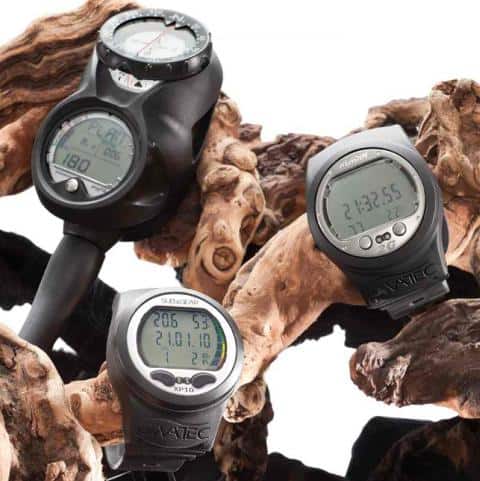Underwater diving has become a very popular sport nowadays and is not only limited on the ocean but also on other bodies of water such as lakes, rivers and ponds.
On a typical dive outing, SCUBA divers plan on how long they will remain underwater and how deep they will descend. On top of the basic SCUBA equipment that consist of diving mask, snorkel, fins, wet/dry suit, air tank, air regulator and buoyancy control device, dive computers are now added as one of the diving essentials.

Dive computers can either be a wrist watch type or as an instrument console so always choose which one fits and will work for you.
Photo credit: http://www.sportdiver.com/
Ever since in the 80’s, dive computers have been innovating the diving world. Prior to this development, divers basically have to calculate the dive time based on the maximum depth the diver plans to descend. The dive computer reformed this significantly by being able to calculate the maximum dive time based on the actual dive, thus, allowing multi-level diving. Amazing, isn’t it?
It doesn’t matter which part of the world are you diving; whether it’s in Cocos Island, the Galapagos or on a Liveaboard Rajah Ampat, modern dive computers will always keep track of the divers’ dive history and constantly update on how much time left, based on the diver’s current depth. This in turn gives divers the chance to safely remain underwater in areas with potentially shorter safety stops.
See how dive computers are made!
http://www.youtube.com/watch?v=Ez_wPSEmHq0
Actually, a dive computer need not be complicated. In fact, they should be easy to read and simply enough to operate.
Here are some of the important features a dive computer should have:
- The buttons must be manageable underwater and even when wearing dive gloves.
- Display visibility of dive computers should also be an important factor when choosing one. Display numbers should be clear and readable enough especially in low-lighted situations.
- Backlights should also be available if needed.
- Although Scuba diving computers can display a lot of information, The most essential numbers are Depth and Available Bottom Time Remaining. Additional information that maybe displayed is current depth, maximum depth, ascent rate monitor, surface interval time, and even water temperature. But the more information you want to see, the smaller it will become in order to fit on the screen.
- Additional feature that you might consider as well when buying dive computers is whether you will dive on Nitrox or Air only.
- Ask yourself if you want your dive computer to be integrated with your Personal Computer. This will permit you to see whole dives in profiles and provide extra information not normally accessible via the dive computer itself.
- On the other hand, an air-integrated dive computer is a great advantage because it will calculate the breathing rate, notifying the diver how much time left to dive at the current air consumption.
- It would be great if the dive computer’s battery is user-changeable. This means that it does not entail specialty shops to have it replaced when batteries drain.
Watch this video to help you choose the best dive computer for you!
Overall, let us bear in mind that no matter how much one pay or how good the dive computer is, it is still a device. And just like any other devices, it will not be helpful and effective if not used properly. Common sense and intuition must prevail even if your computer tells you that everything is alright.
It’s still better to practice paper dives or even check computer recorded dives by doing it with a dive table once in a while. It will make a diver put his mental skills in use and keep him sharp. Best of all, don’t forget to “Plan your dive and dive your plan!” Happy diving! 
 Destinations
Destinations








It is very useful to everyone. And also it will calculate the breathing rate and its features are really useful to everyone.
Thanks for sharing this useful information.
Great information about this i really enjoy to read this information.